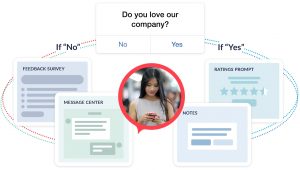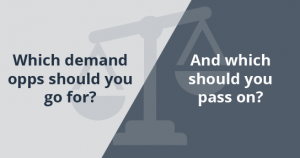Practically all small businesses kick things off with the hope of becoming the next giant of their industry. Still, the metamorphosis from a scrappy young startup to stable business is one that requires quite a bit of hard work and investment. The progression can be made all the more easy and accessible for the businesses that put scalable practices into play from the outset.
If your business has growth and stability on its mind, the below tips on how to scale your e-commerce business were collected just for you.
Provide an Ideal Customer Experience
You cannot have a successful e-commerce business without a well-run site. Today’s online consumers have access to too many options for your site to have complex interfaces or run slowly. Not only will lose their patience with your insufficient site, they’ll go off and take their business to one that gives them a better experience. In addition, once search engines catch wind that you’re difficult to maneuver, they’ll lower your search rank.
If you’re an emerging e-commerce retailer and haven’t already upgraded your platform it’s time to make the crossover. Most e-commerce sites often start on a simple site like WordPress or Squarespace to conduct their business. Eventually, though, they outgrow these sites and find themselves restricted by their features. Upgrading to an e-commerce site like Shopify can grant you access to an array of assets including plugins and a ripe community.
Sites specifically geared towards e-commerce businesses typically give business owners access to tools that are inaccessible on web template systems. Shopify’s E-Commerce University (which houses how-to guides, forums, and even a blog) gives e-commerce owners access to a network of customers and tools for marketing. With so many resources available, and so much to lose there’s no space for slacking off if you want to be the next giant of your industry.
Improve Shipping
Assuming you offer a product or service that requires delivery, your growth will require you, at some point, to consider a new set up for your delivery strategy. Guaranteed. This is because the logistics of your shipping process will become more complex as you take on new customers. Say for instance that the site you’ve set up on Shopify allows you to address your orders through a provider like FedEx. Determining the best rate to apply to an order based on shipping fees and proximity might be relatively easy for you to manage on Shopify at first. Eventually, however, as your site continues to grow in popularity you’re going to need a bit more help. Especially if, in addition to Shopify, you provide your product on other sales channels like Amazon or eBay. Not only does your volume of orders increase but it becomes more complex to manage. Fulfillment requests will pour in and threaten the effect of your quality of customer service and efficiency. As cheap as it might seem to handle it all on your own, you won’t be able to and it will cost you if you do.
For business experiencing a boon of growth, consider fulfilling shipments with automation software or dropshipping. Both options will reduce overhead and allow you to focus on the areas of business that require your actual expertise.
Invest In Marketing, Or Face Peril
With an umpteenth plethora of channels at your disposal, there’s no reason for you to not have a marketing strategy in play. In fact, marketing should be a concept that always goes hand-in-hand with each thought of your business. From social media advertisements and branding to receipt coupons and SEO, there’s plenty of approaches to marketing that your business should be attempting to pursue.
For businesses looking for a straightforward strategy, start your scaling efforts off by collecting potential consumers online. Ensure that you include a section for a blog on your site, where you can publish product-related content. Creating content will allow you to establish yourself as an authority in your field, and direct traffic to your brand. This is especially true if you account for SEO requirements in order to boost the search-ability of your site. SEO can be one of the most difficult marketing tactics to get right, but its payoffs are worth the hustle. Sites like Facebook and Instagram will allow you to create ads for your blog content and promote it online. For those that aren’t ready to invest too much in ads, use Facebook and Instagram to plug links to followers instead.
Digital & Social Articles on Business 2 Community(26)





